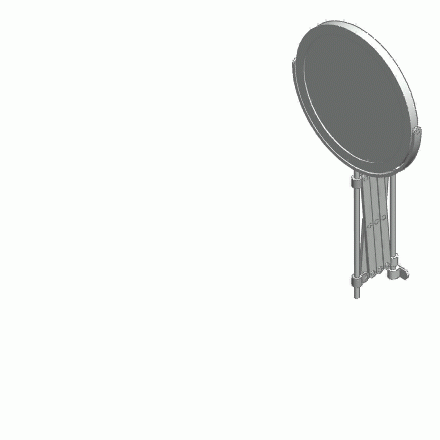/Johntaggburden
What the photograph asserts is the overwhelming truth that 'the thing has been there
Barthes and his mother , the camera as instrument of evidence, The trauma of Barthes's mother's death throws Barthes back on a sense of loss which produces in him a longing for a pre-linguistic certainty and unity - a nostalgic and regressive phantasy, transcending loss, on which he founds his idea of photographic realism: to make present what is abent or, more exactly, to make it retrospectively real
engraved images produced by the physionotrace - the briefly fashionable device for tracing profiles were also seen at the time, the end of the eighteenth and beginning of the nineteenth century, as the source of a truth not possessed by conventional images
physionotrace- was, in a sense, the ideological precursor of photography ( an instrument designed to trace a person's physiognomy, most specifically the profile in the form of a silhouette) (descendant of the pantograph, interesting also about scaling )
the risk of making montage a special case: a case of manipulation of otherwise truthful photographic elements.
every photograph is the result of specific and, in every sense, significant distortions which render its relation to any prior reality deeply problemati¢ and raise the question of the determining level of the material apparatus and of the social practices within which photography takes place
The optically 'corrected' legal record of a building
far;ade is no less a construction than the montage
The legal record is, in much the same way though for different purposes, an image produced according to certain institutionalised formal rules and technical procedures which define legitimate manipulations and permissible distortions in such a way that, in certain contexts, more or less skilled and suitably trained and validated interpreters may draw inferences from them, on the basis of historically established conventions.
only in this institutional framework that otherwise disputable meanings carry weight
The indexical nature of the photograph - the causative link between the pre-photographic referent and the sign - is therefore highly complex, irreversible, and can guarantee nothing at the level of meaning
cultural and historical process in which particular optical and chemical devices are set to work to organise experience and desire and produce a new reality - the paper image
How could all this be reduced to a phenomenological guarantee?
At every stage, chance effects, purposeful interventions, choices and variations produce meaning, whatever skill is applied and whatever division of labour the process is subject to. This is not the inflection of a prior (though irretrievable) reality, as Barthes would have us believe, but the production of a new and specific reality, the photograph ( which becomes meaningful in certain transactions and has real effects, but which cannot refer or be referred to a prephotographic reality as to a truth)
The photograph is not a magical 'emanation' but a material product of a material apparatus set to work in specific contexts, by specific forces, for more or less defined purposes.
It requires, therefore, not an alchemy but a history,
outside which the existential essence of photography is empty and
cannot deliver what Barthes desires: the confirmation of an
existence; the mark of a past presence; the repossession of his
mother's body.
Neither experience nor
reality can be separated from the languages, representations,
psychological structures and practices in which they are articulated
and which they disrupt.
What exceeds representation, however, cannot, by definition, be articulated. More than this, it is an effect of the production of the subject in and through representation to give rise to the phantasy of this something more.
A Democracy of the Image: Photographic Portraiture and Commodity Production
But what do such pictures do for us? What uses do they have? Why does it seem natural to have kept them? And how has it come about that, for most people, photography is primarily a means of obtaining pictures of faces they know?
Does the blurred cameo effect and wistful expression of the prison record photograph make this early mug shot comparable with an imposing and expensive studio portrait by Nadar? Or with the stiff figures of the cigarette-card sized pictures in the album of celebrities?
Each of these images belongs to a
distinct moment; each owes its qualities to particular conditions of
production and its meaning to conventions and institutions which
we may no longer readily understand.
The transparency of the
photograph is its most powerful rhetorical device.
yet the change from a profile representation to a ful1-
face involved more than expediency and taste

